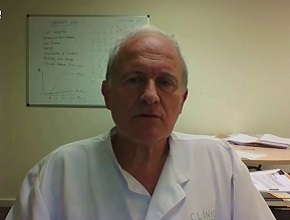Dr Ian Gralnek is a professor of gastroenterology at the Rappaport Faculty of Medicine, Technion-Israel Institute of Technology, chairman of Ellen and Pinchas Mamber Institute of Gastroenterology, Hepatology, and Endoscopy at Emek Medical Center, Afula, Israel, and Secretary General of the European Society of Gastrointestinal Endoscopy (ESGE).
If you were to name the 3 most important recent advances in gastrointestinal endoscopy, what would they be?
Ian Gralnek, MD, MSHS: I think there’ve been a number of important, relatively recent innovations in endoscopy. There’ve been a lot of them, but if I were [to] name maybe 3 of what I think are most important… [The first one] is the development of POEM—peroral endoscopic myotomy. This is an endoscopic therapy for patients with achalasia. There’ve now been [a] randomized trial or trials, there’ve been 2 of them, that have shown that it is as good as surgical myotomy. So, this has been a very, very important breakthrough because this allows our patients to have minimally invasive endoscopic therapy for their achalasia, with very good outcomes. It was developed 10 or 11 years ago by Prof. Inoue from Japan and it is now an endoscopic therapy that is being used worldwide for treating these patients.
Another very recent innovation, of course, in all of medicine but especially in endoscopy, is the role of artificial intelligence (AI). There are now software programs. I think this is going to be part and parcel of all of our future endoscopic software that we use with our endoscopes. There are data to show that we can find colonic polyps better with the use of AI and I think this is only going to continue to grow within all facets of endoscopy, whether it’s for polyp detection, whether it’s for looking at precancerous lesion detections anywhere in the gastrointestinal (GI) tract, whether that’s the esophagus or the stomach, or the small bowel, or the colon. So, I think we really… Over the next 5 to 10 years, we are going to see an explosion of the use of AI in endoscopic detection.
And then, lastly, this is not that new but just… the increasing role of endoscopic mucosal resection and endoscopic submucosal dissection—EMR and ESD—within the GI tract. There were many patients in the past in whom lesions were found—precancerous lesions—who were sent for surgery. This is especially true for large colonic polyps. Now, these patients are able to be taken care of endoscopically, but no surgery [is] required; even those patients in whom there [is] suspected submucosal invasion where we can now do ESD and take out lesions, whether it’s the upper GI tract or [an area] within the colon. So, we see more and more [often] that endoscopy is becoming more surgical endoscopy or endoscopic surgery and I think this is really only gonna continue to increase and become more and more common worldwide.
Those are my thoughts about recent innovations and advancements within endoscopy.
 English
English
 Español
Español
 українська
українська








